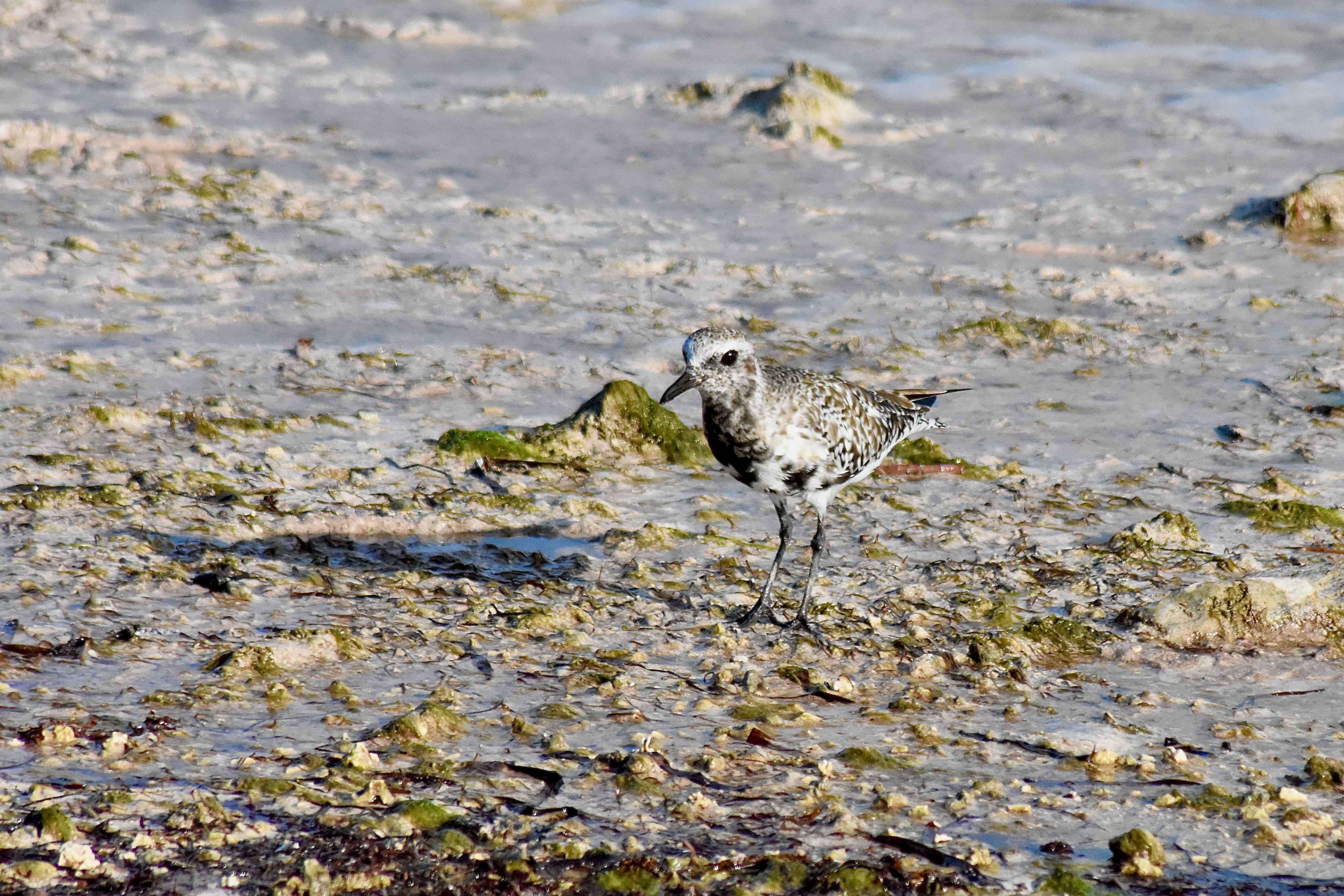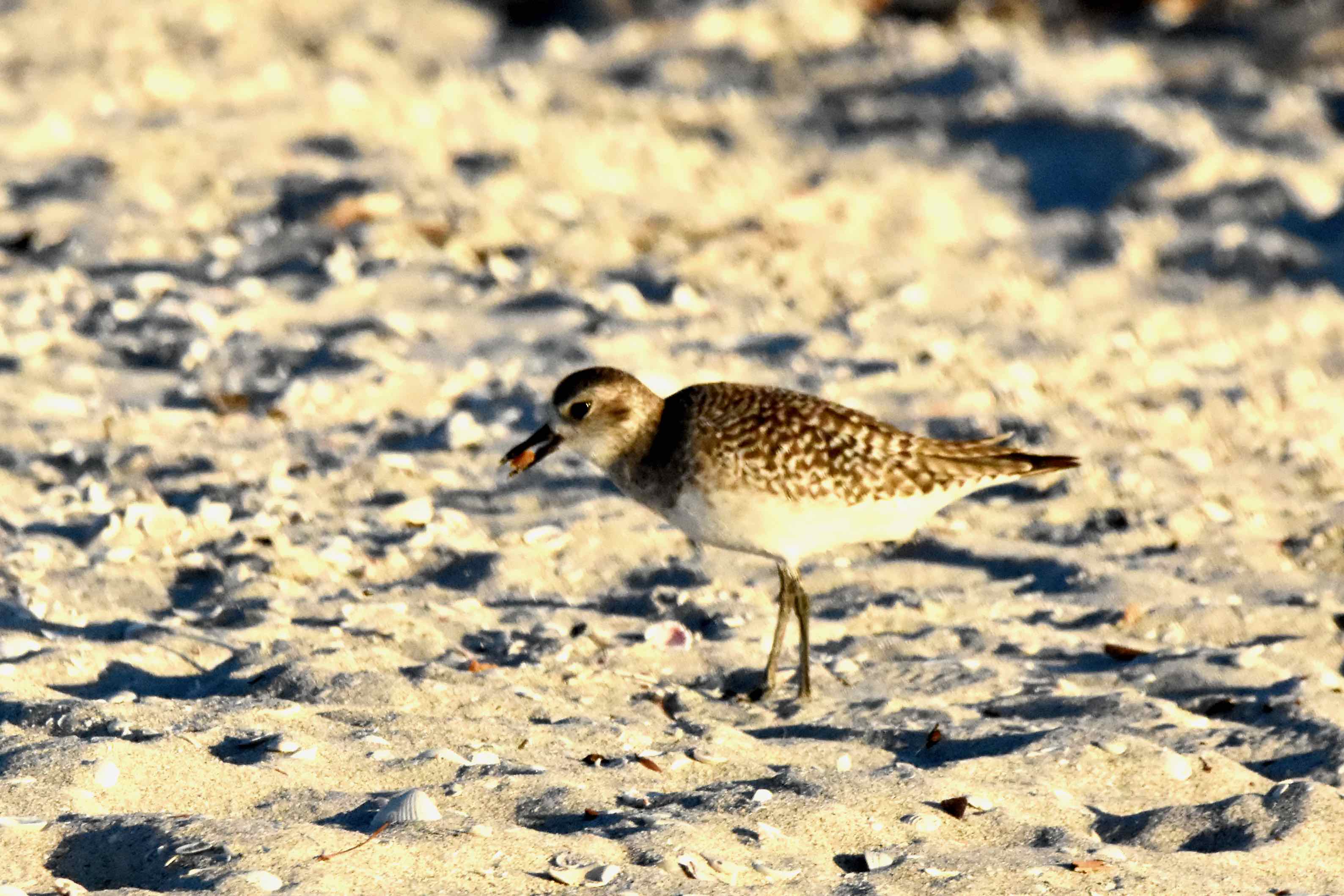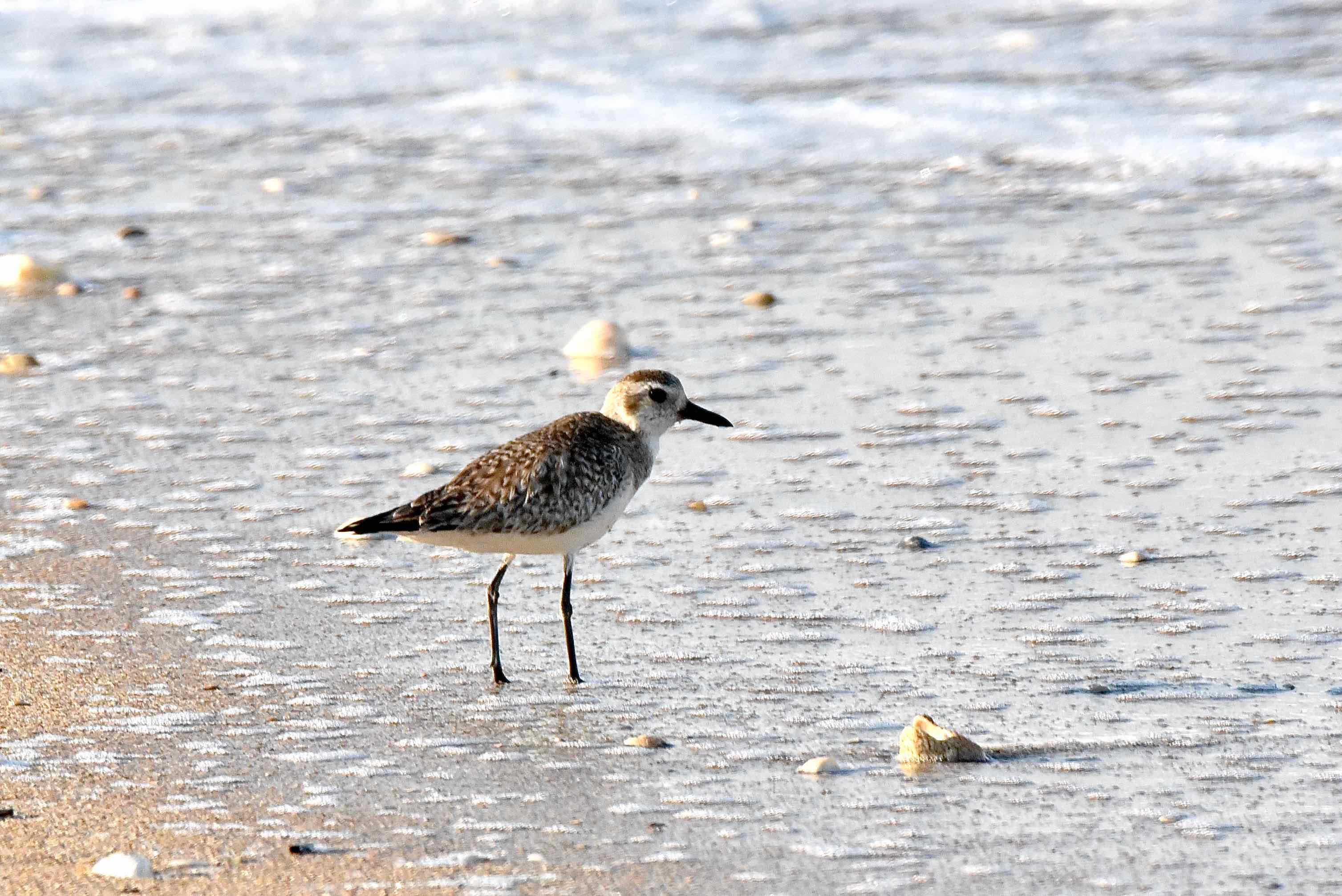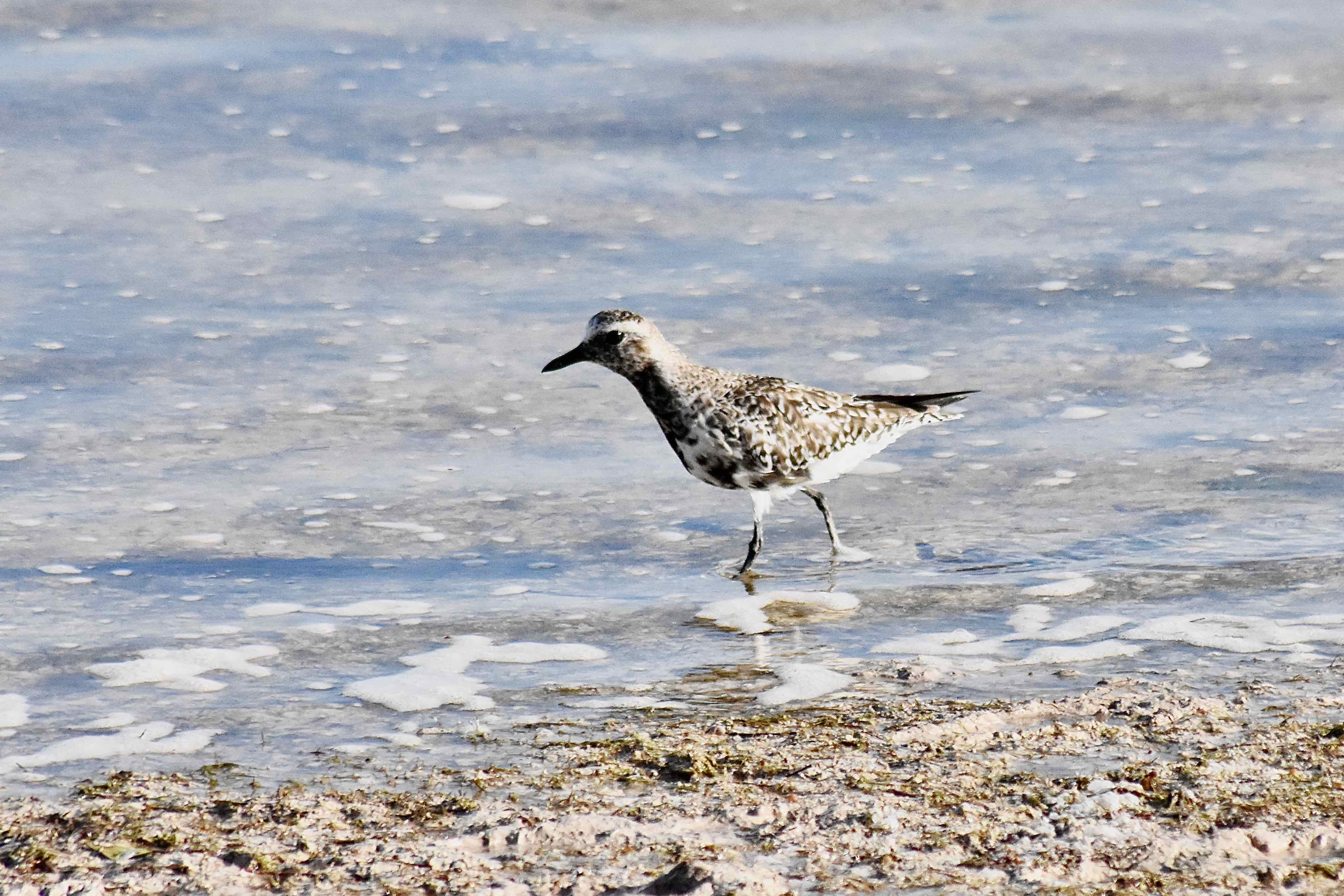
Black-bellied plover, photographed at Long Key State Park, Monroe County, in April 2017.
The black-bellied plover, Pluvialis squatarola, is a bird of geographic extremes. It spends the summer in the far, far north, then sprints as far south as Uraguay and Chile.
It's commonly found on the beaches of South Florida, fall into spring, either making a pit stop on its way to points farther south, or as a winter time guest. Some immatures will summer here as well.
But it doesn't need to bask in our warm winter sun; places as far north as Massachusetts on the Atlantic coast and British Columbia-Washington state on the Pacific will do just fine during the cold months. Its range includes six continents — Europe, Asia, Africa and Australia in addition to North and South America — making it a truly cosmopolitan bird.
The black-bellied also has the distinction of being the largest plover found in North America. It's a coastal bird, rarely found far inland in migration or any time of the year.
Black-bellied plover plummage during the summer breeding season is unmistakable. Males are a striking black from the face just above the eye, through the neck, chest and belly. It has a slight mottled skull cap, back and wings. In winter, the blacks dissolve into a mottled mix of whites, grays and browns. Females are more variable; they can resemble breeding males or they can be more on the mottled side.
It is a medium-sized shorebird, with body length of about a foot and a wingspan of about two feet. It has long, black legs, a short neck and and a relatively short bill.
Its diet in summer is mostly insects, but that changes in winter to include a variety of worms, crustaceans and bivalves (clams, etc.). They're extremely wary and act as an alarm system of sorts in mixed groups of birds.
Black-bellied plovers spend summers in the Arctic on dry tundra ridges above lakes and rivers and less commonly in wetter places nearer to the coast. They nest on the ground, scraping out a spot and lining it with lichens, twigs, leaves and pebbles. Clutches can vary from one to five eggs. Both males and females handle incubation duties, which last about four weeks. Young black-bellied plovers can walk soon after hatching and are capable of feeding themselves. They fledge in 35 to 45 days. Both parents will watch over their young for the first couple of weeks at which point mom will leave; dad will stick around for the time being, but he too, might leave before the kids are fully fledged.
Black-bellied plovers will use a broken-wing trick similar to that of killdeers to decoy approaching predators away from their nest and young. The bird will act as if it's disabled and thereby an easy meal and move away from the nest with the idea that the distracted would-be predator will follow. Black-bellied plovers will also mob predators that approach a nesting site.
Black-bellied plovers are members of Charadriidae, the plover family. They're also known as gray plovers.
Long Key State Park



